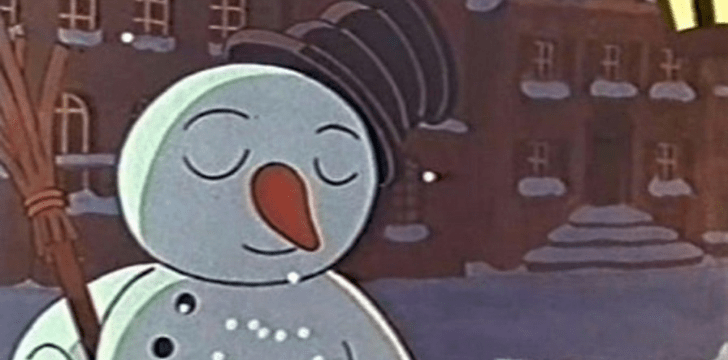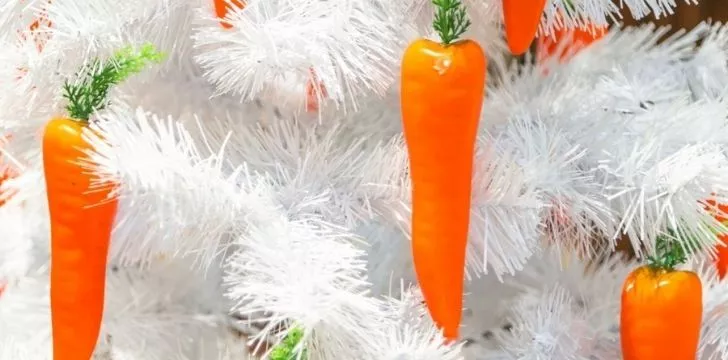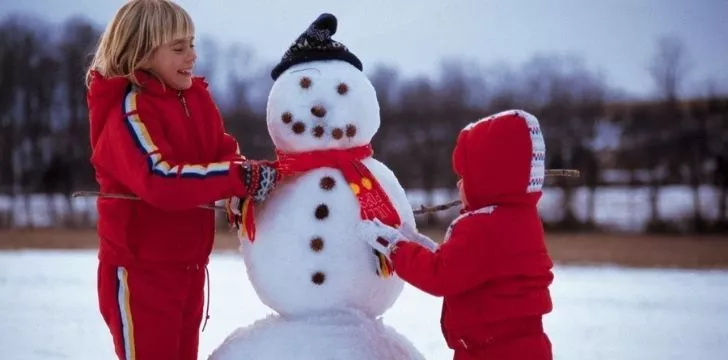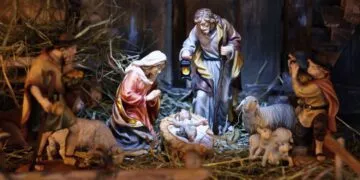One of the most popular things to do with snow, other than to have a snowball fight is to build a snowman.
The tradition has been passed on from generation to generation, alongside tales of snowmen at Christmas.
But why do we dress a snowman a certain way and more importantly why a carrot for a nose?
Let’s have a look at the history of snowmen and see if we can find out where the tradition began.
Why do we build snowmen?

We all know snowmen are great fun at Christmas but let’s go a little deeper than that.
Let us start with a little bit of background into where the tradition originated.
Throughout history, we have associated the seasons and times of the year with personifications.
The winter season in Greek Mythology would have been referred to as “Old Man Winter” and across other cultures, there are similar representations.
Jack Frost was one of the first personifications of winter that was written about across literature in the late 19th Century.
This is believed to be the reason behind the construction of the snowman.
The snowman is another form of Old Man Winter and the tradition of building one has been around for hundreds of years.
This character of Old Man Winter was said to leave a frosty air in his presence and be a cold and fierce character, much like the harshness that winter brings.
Many of these personalities and traits have fed into our representation of snowmen and this is where his sometimes scary and fierce characteristics come from.
Why a carrot for a nose?

Using a carrot for a snowman’s nose is a global tradition when it comes to constructing a snowman.
It is unsure why this is a common trend and there are many theories that suggest why we automatically use this vegetable.
Some of the earliest depictions of snowmen date back as far as the 1300s and they show snowmen with long pointed noses.
It could be that the carrot was used to emphasize this feature of snowmen.
They were represented as fierce and cold characters, so a pointy nose was a common way of making them appear harsh.
Much like we associate witches with a hooked or pointed nose, it was important for a snowman to carry these defined characteristics.
Other objects have been used throughout history for a snowman’s nose, things such as buttons and coal but the carrot is the most iconic item to use.
Traditionally a snowman would have coal for eyes and small pieces of coal to make a mouth.
The nose however would have been made from whatever resources were around at the time.
Who was the first snowman with a carrot nose?

The first known snowman character to have a carrot for a nose featured in the German animation “Der Schneemann”, which was created in 1943.
In English, “Der Schneemann”, is known as “The Snowman” or “Snowman in July”.
This was one of the first representations of a snowman being naïve and that made the audience feel sorry for him.
Throughout history, snowmen were associated with harsh winters and strength, but this was when snowmen started to become adored cartoon characters.
This suggests that the tradition originated in Europe and possibly more specifically Germany, as there had not been depictions of a snowman with a carrot nose before this time.
Characters that win the hearts of the viewers will then often be represented in their lives, and this could have been the start of the tradition of using a carrot for a nose.
What did one snowman say to the other?
Smells like carrots!
Where do carrots come from?

Another question to help us solve this mystery is looking at where carrots originate.
The orange carrots we use on snowmen today were specially cultivated in the Netherlands in the 16th Century.
The myth and legend suggest that orange carrots were specifically bred by the Dutch in honor of King William I, also known as William of Orange.
Although there is not a large amount of evidence to suggest this story is true, it could have been one of the catalysts for growing orange carrots in Europe.
Hence meaning they were widely available and a common vegetable found in the home.
This would have meant that alongside coal and a scarf, a carrot became a normal household item to use when building a snowman.
What was used for a snowman’s nose before?

One of the earliest drawings of a snowman is written about in Bob Eckstein’s The History of the Snowman (2007).
Eckstein found the drawing in a 15th-century book called “The Book of Hours”, which he found in the Koninklijke Bibliotheek (library) in The Hague, Netherlands.
This doodle of a snowman showed a white rounded figure with a pointed nose.
It is seen from this drawing that a snowman has a universal shape of being constructed from gathering snow and forming it into circular shapes with a pointed nose.
It would have been common to use an icicle for a snowman nose, as they are pointed and seasonal.
However, icicles would have likely melted quicker than the snowman itself.
Other common items used for snowmen’s noses were buttons, as seen on 1982 animation, The Snowman.
In Conclusion

Snowmen are an important character in creating a winter wonderland and Christmas atmosphere.
It is difficult to pinpoint a time in history when snowmen’s noses became carrots, but there are some theories behind it.
We choose to decorate them with our household items, and this is different depending on where you are in the world.
It could have been that following the release of “Der Schneemann”, people loved the character and wanted to recreate him when building their own snowman.
Carrots have also become a widely available and affordable vegetable that is often harvested just before winter.
The tradition of using a carrot for a nose has become a global ritual thanks to characters such as Der Schneemann, Jack Frost & Olaf from Disney’s Frozen.


















